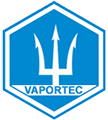Middle East and Africa Water and Sewage Construction Projects Insights Report 2019 - ResearchAndMarkets.com
The "Project Insight - Water and Sewage Construction Projects: Middle East and Africa" report has been added to ResearchAndMarkets.com's offering.
Scope
- The total pipeline of projects is valued at US$133.2 billion with US$19.1 billion being spent in 2019 and US$30.8 billion in 2020
- The highest value of projects are at the execution stage with a total value of US$58.8 billion, followed by projects in pre-execution with US$40.3 billion
- Projects that are in the pre-planning stage total US$29.1 billion, while those in the planning stage have a value of US$4.9 billion
- Assuming all projects in the current pipeline proceed as planned, spending will reach US$30.8 billion in 2020 and fall to US$7.3 billion in 2023. The highest value of project completions will be in 2021, with a value of US$28.7 billion
- Desalination plants projects account for the highest value with US$52.7 billion
- The top contractors in the region are Hyundai Engineering Co Ltd based in South Korea, and SEPCO III Electric Power Construction Corporation based in China. The top consulting engineers are Lahmeyer International GmbH, based in Germany but part of Tractebel Engineering based in Belgium, and Amec Foster Wheeler (Wood Group), based in the UK
Project Insight - Water and Sewage Construction Projects: Middle East and Africa provides analysis based on projects showing total project values for the Middle East and Africa and analysis by stage and funding for the top ten countries. The top 50 projects are listed for the region giving country, stage, value of water and sewage construction.
The Middle East and Africa includes the developing countries of Africa and the highly developed Gulf Cooperation Council (GCC) countries, with oil revenue to be spent on developing and improving water and sewage infrastructure. The Middle East and North Africa (MENA) is the world's most water-scarce region, with 17 countries below the water poverty line set by the United Nations.
Rapid population and economic growth, shared water supplies across borders, and the effects of climate change - including frequent droughts, together with declining rainfall - have severely tested water supplies. The desalination of seawater is common in the region, with the highest investment in Kuwait and Oman, with US$17.6 billion and US$11.8 billion respectively.
The MENA region is responsible for 47% of global desalination capacity, which has a large carbon footprint, given the amount of power required in the desalination process. Apart from the economic damage that scarcity of water creates there are wider political implications due to potential sources of aggression with cross border disputes over water in the region. The potential for wide scale epidemics in sub-Saharan Africa as a result of poor water supply and wastewater treatment is a constant threat in the region.
Large urban populations are located away from the main source of water in the Congo River basin, with infrastructure being expensive, and the necessity to overcome the difficult topography of the region. Most water supply is surface-based, rather than from ground sources or aquifers, and is often polluted.
Ranked listings of the key operators for the sector are also provided showing the leading contractors, consulting engineers and project owners. Country profiles are provided for the top 10 countries including Saudi Arabia, Kuwait and Qatar.
Key Topics Covered:
1. OVERVIEW
2. SECTOR ANALYTICS
2.1. Desalination Plants
2.2. Collection and Transmission
2.3. Treatment Plants
2.4. Containment
2.5. Other Water and Sewage Infrastructure
3. PROJECT ANALYTICS BY COUNTRY
3.1. Saudi Arabia
3.2. Kuwait
3.3. Qatar
3.4. The UAE
3.5. Oman
3.6. Iraq
3.7. Mauritania
3.8. South Africa
3.9. Bahrain
3.10. Egypt
For more information about this report visit https://www.researchandmarkets.com/r/2hz1hw
View source version on businesswire.com: https://www.businesswire.com/news/home/20191205005572/en/





